Engage NY Eureka Math 4th Grade Module 3 Lesson 22 Answer Key
Eureka Math Grade 4 Module 3 Lesson 22 Problem Set Answer Key
Question 1.
Record the factors of the given numbers as multiplication sentences and as a list in order from least to greatest. Classify each as prime (P) or composite (C). The first problem is done for you.
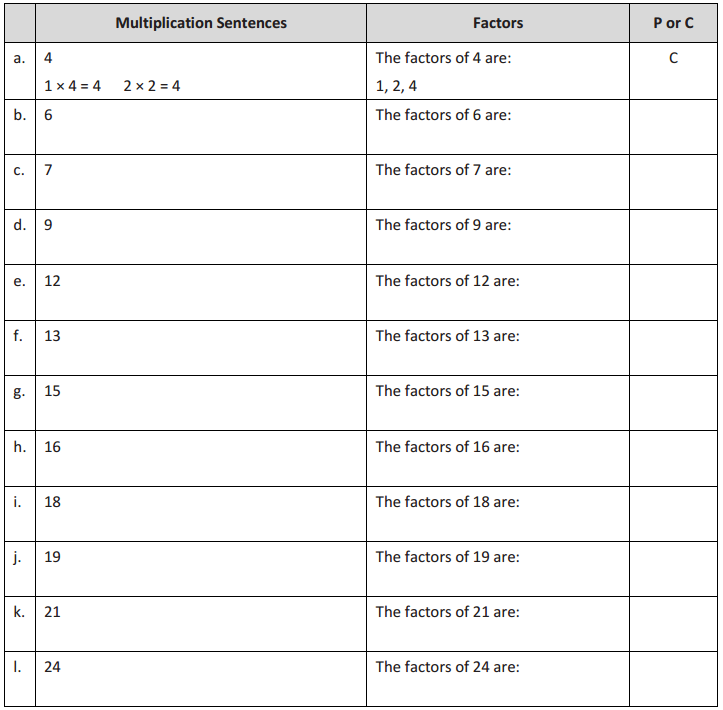
Answer:
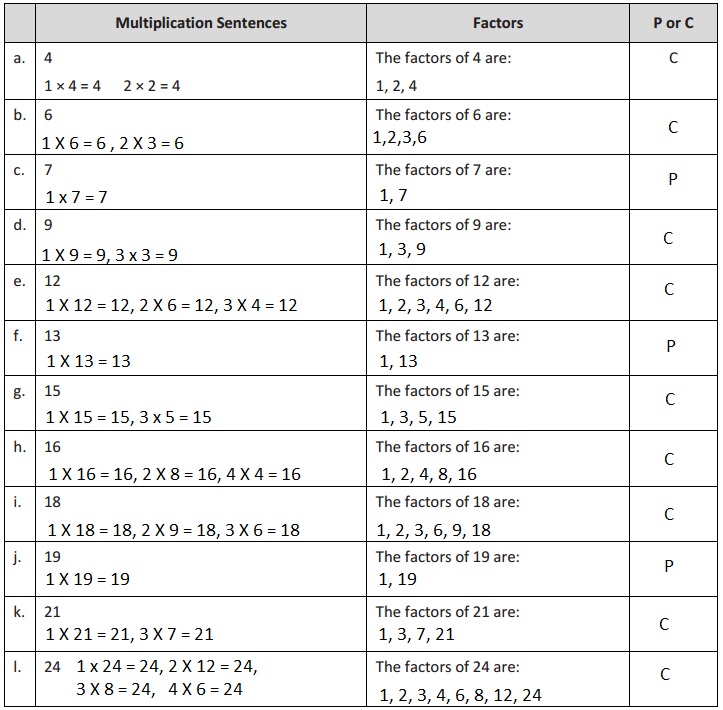
Explanation:
A composite number is a natural number or a positive integer which has more than two factors. For example, 15 has factors 1, 3, 5 and 15, hence it is a composite number.
Prime numbers are numbers that have only 2 factors:
1 and themselves. For example, the first 5 prime numbers are 2, 3, 5, 7, and 11.
Recorded the factors of the given numbers as multiplication sentences and as a list in order from least to greatest.
Classified each as prime (P) or composite (C) as shown above.
Question 2.
Find all factors for the following numbers, and classify each number as prime or composite. Explain your classification of each as prime or composite.
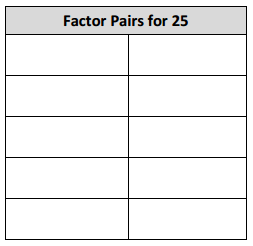
Answer:
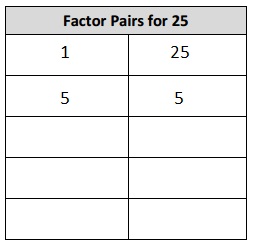
25 is composite,
Explanation:
Found all factors for the following number of 25 as
1 X 25 = 25, 5 X 5 = 25 and classified the number 25 as composite because 25 has more than 2 factors 1, 5, 25.
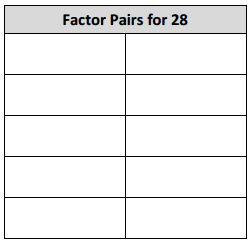
Answer:
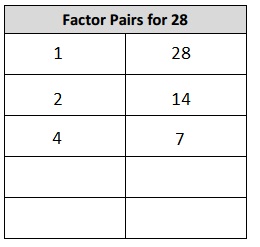
28 is composite,
Explanation:
Found all factors for the following number of 28 as 1 X 28 = 28, 2 X 14 = 28, 4 X 7= 28 and classified the number 28 as composite because 28 has more than 2 factors 1, 2, 4, 7, 14, 28.
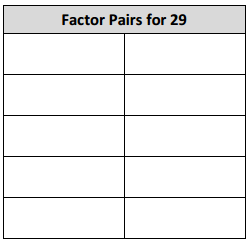
Answer:
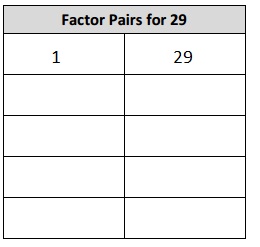
29 is prime,
Explanation:
Found all factors for the following number of 29 as 1 X 29 = 29 and classified the number 29 as prime because 29 has only 2 factors just 1, 29.
Question 3.
Bryan says all prime numbers are odd numbers.
a. List all of the prime numbers less than 20 in numerical order.
Answer:
2, 3, 5, 7, 11, 13, 17, 19,
Explanation:
Listed all the prime numbers less than 20 in numerical order are 2, 3, 5, 7, 11, 13, 17, 19.
b. Use your list to show that Bryan’s claim is false.
Answer:
Bryan’s claim is false because 2 is even number,
Explanation:
Bryan says all prime numbers are odd numbers but all the prime numbers less than 20 in order are 2, 3, 5, 7, 11, 13, 17, 19 from the list number 2 is even number so Bryan’s claim is false.
Question 4.
Sheila has 28 stickers to divide evenly among 3 friends. She thinks there will be no leftovers. Use what you know about factor pairs to explain if Sheila is correct.
Answer:
Sheila is incorrect, there will be 1 left over,
Explanation:
Given Sheila has 28 stickers to divide evenly among 3 friends.
She thinks there will be no leftovers but 3 is not a factor of 28, but 3 is a factor of 27, So each friend could receive 9 stickers each and there would be 1 sticker leftover.
3 X 9 = 27, 27 + 1 = 28.
So Sheila is incorrect, there will be 1 leftover.
Record the factors of the given numbers as multiplication sentences and as a list in order from least to greatest.
Classify each as prime (P) or composite (C).

Answer:
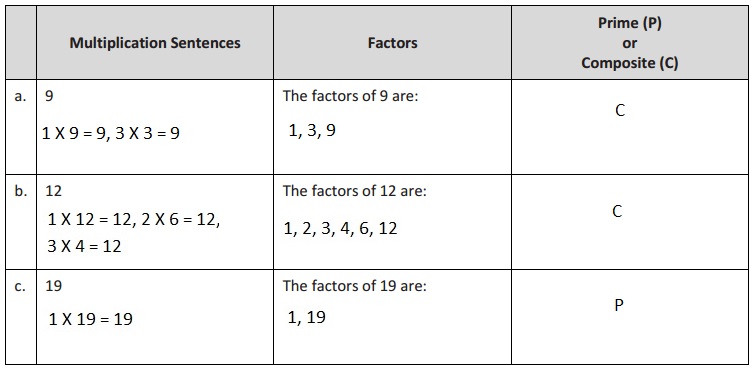
Explanation:
Recorded the factors of the given numbers as multiplication sentences and as a list in order from least to greatest.
Classified each as prime (P) or composite (C) as shown above.
Question 1.
Record the factors of the given numbers as multiplication sentences and as a list in order from least to greatest. Classify each as prime (P) or composite (C). The first problem is done for you.
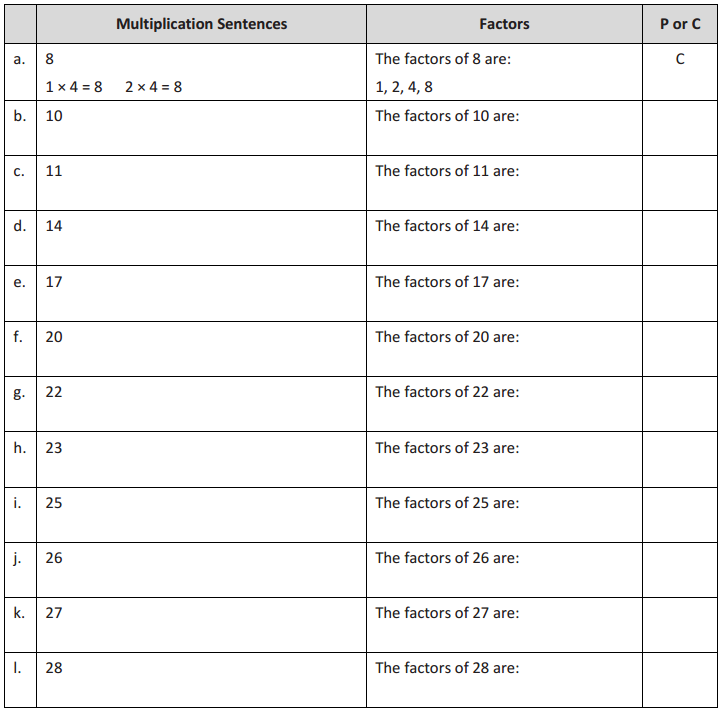
Answer:
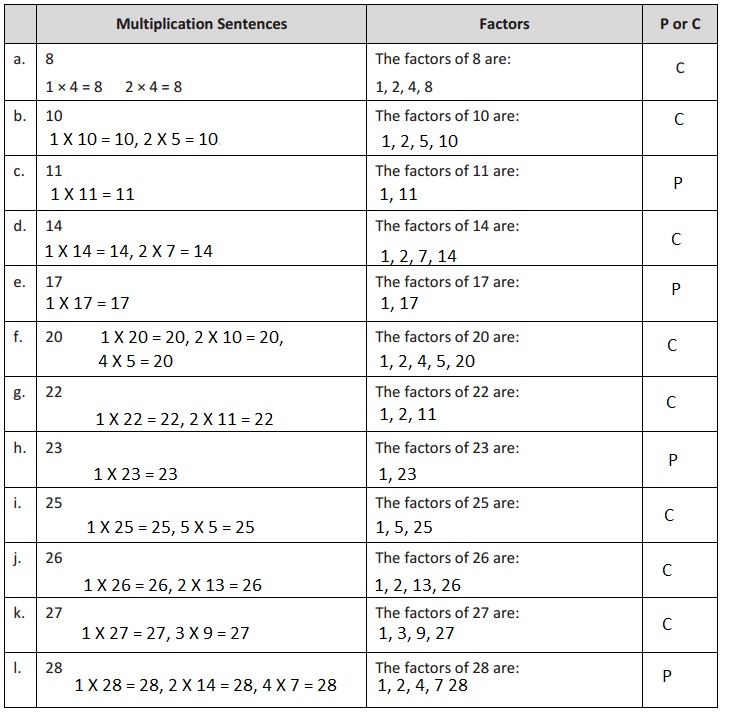
Explanation:
Recorded the factors of the given numbers as multiplication sentences and as a list in order from least to greatest.
Classified each as prime (P) or composite (C) as shown above.
Question 2.
Find all factors for the following numbers, and classify each number as prime or composite. Explain your classification of each as prime or composite.
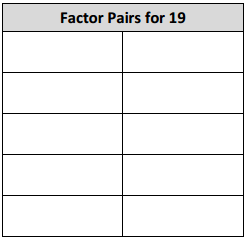
Answer:

19 is prime,
Explanation:
Found all factors for the following number of 19 as 1 X 19 = 19 and classified the number 19 as prime because 19 has only 2 factors just 1, 19.
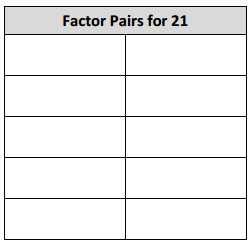
Answer:

21 is composite,
Explanation:
Found all factors for the following number of 28 as 1 X 21 = 21, 3 X 7 = 21 and classified the number 21 as composite because 21 has more than 2 factors 1, 3, 7, 21.

Answer:
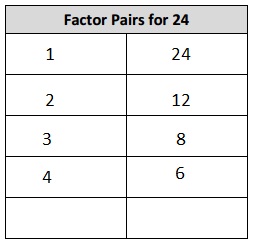
24 is composite,
Explanation:
Found all factors for the following number of 24 as 1 X 24 = 24, 2 X 12 = 24, 3 X 8= 24, 4 X 6 = 24 and classified the number 24 as composite because 24 has more than 2 factors 1, 2, 3, 4, 6, 8, 12, 24.
Question 3.
Bryan says that only even numbers are composite.
a. List all of the odd numbers less than 20 in numerical order.
Answer:
2, 3, 5, 7, 11, 13, 17, 19,
Explanation:
Listed all the odd numbers less than 20 in numerical order are 2, 3, 5, 7, 9, 11, 13, 17, 19.
b. Use your list to show that Bryan’s claim is false.
Answer:
Bryan’s claim is false because only even numbers are composite even odd numbers are also composite because 9 is a odd number which is composite,
Explanation:
Bryan’s claim is false because only even numbers are composite even odd numbers are also composite because 9 is a odd number which is composite
1 X 9 = 9, 3 X 3 = 9, 9 has more than 2 factors, So Bryan’s claim is false.
Question 4.
Julie has 27 grapes to divide evenly among 3 friends. She thinks there will be no leftovers. Use what you know about factor pairs to explain whether or not Julie is correct.
Answer:
Julie is correct, there will be no leftovers,
Explanation:
Given Julie has 27 grapes to divide evenly among 3 friends. She thinks there will be no leftovers yes 3 is a factor of 27,
So each friend could receive 9 grapes each and there would be no grape left over,
3 X 9 = 27
So Julie is correct, there will be no leftovers.